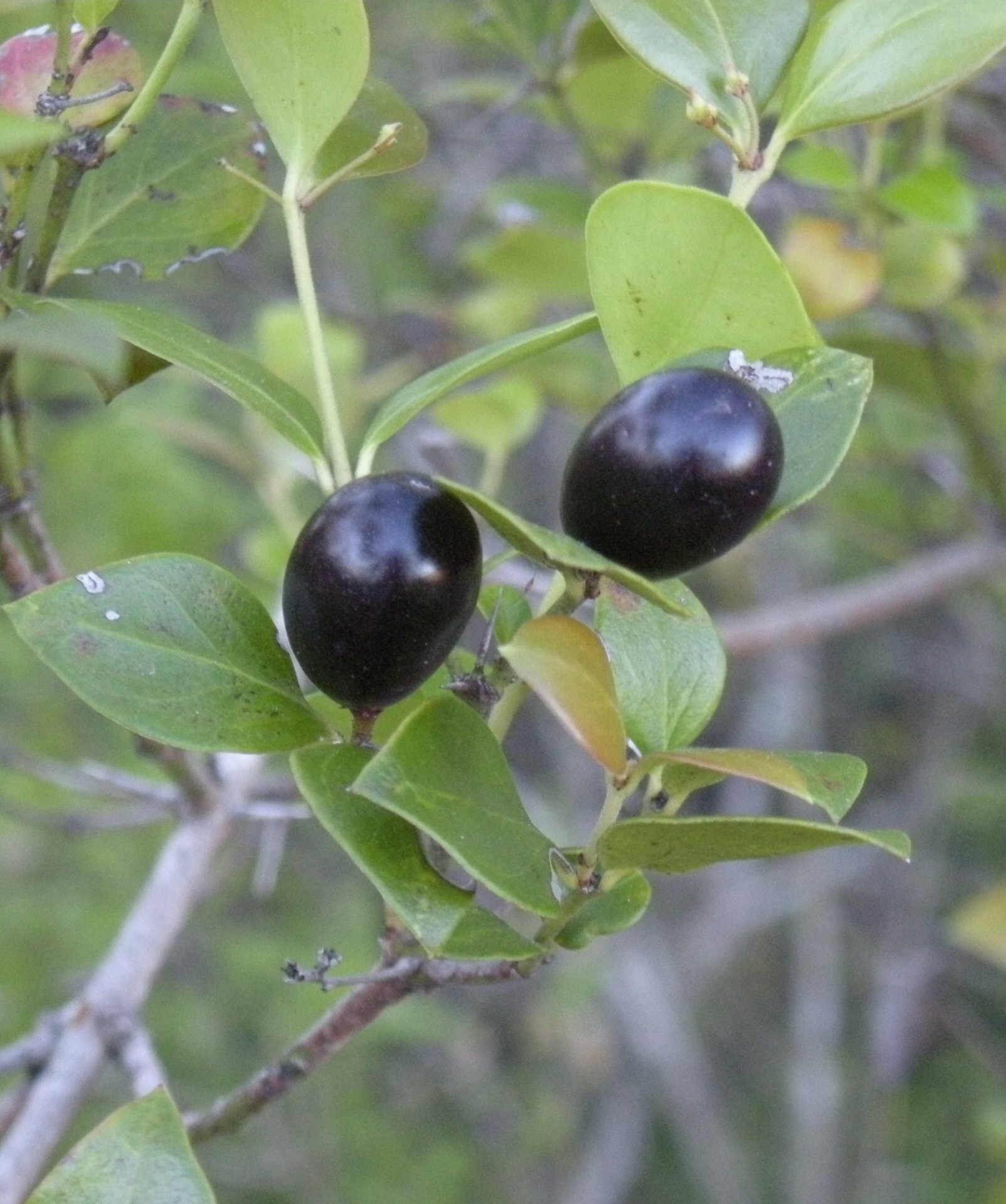- Carissa ovata
Taxobox

name = Bush plum, Conkerberry, currant bush
regnum =Plant ae
divisio = Magnoliophyta
classis =Magnoliopsida
ordo =Gentianales
familia =Apocynaceae
genus = "Carissa "
species = "C. ovata"
binomial = "Carissa ovata"
binomial_authority =An
Australian native plant, "C. ovata" grows as a multi-stemmed shrub 0.5 to 3 metres in height. Leaves are glossy green, opposite, ovate 1-3 cm in length. The stems also bear thorns 1-3cm in length. White, star-shaped flowers ~1cm across are followed by ovate green berries, 1-2cm in, length which turn black or dark purple when ripe. "C. ovata" is found throughout the moister coastal and semi-arid regions of northernAustralia predominantly on fine textured clay and clay loam soils, often in association with "Eucalyptus populnea " orbrigalow . "C. ovata" has a wide environmental tolerance and can be found in coastal rainforest, gallery forest and vine thickets in regions receiving in excess of 900mm annual rainfall as well as softwood scrubs and openEucalypt savannas receiving less than 700 mm annual rainfall."C. ovata" is frequently a weed in grazing land in northern Australia, choking out grasses, reducing the ability of livestock to feed, interfering with stock handling and providing a refuge for vermin. The plant is capable of reproducing rapidly by
layering and is difficult to control mechanically and expensive to manage with herbicides.In the drier western parts of its range "C. ovata" intergrades completely with the very closely related "C. lanceolata" which is distinguished by having longer, narrower leaves. "C. lanceolata" also has a less robust growth form with plants reaching rarely reaching 2 metres in height.
The fruit of "C. ovata" are edible with a sweet flavour. The fruit are variously called conkerberries native currants or black currants in English. The fruit has to be completely ripe to be edible, as the milky sap of this plant is poisonous, in common with many others in the Apocynaceae.
"C. ovata" is a host plant for many butterflies (including Common Crow) and moths (including Hawk Moths) and has been used in attempts to restore small bird habitat in disturbed dry rainforest in Queensland, Australia
Wikimedia Foundation. 2010.
